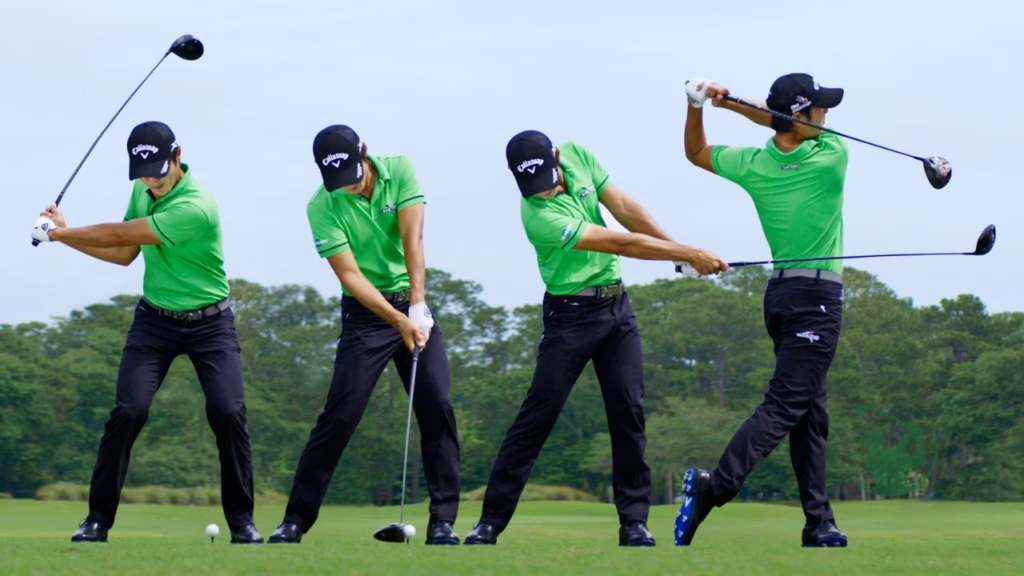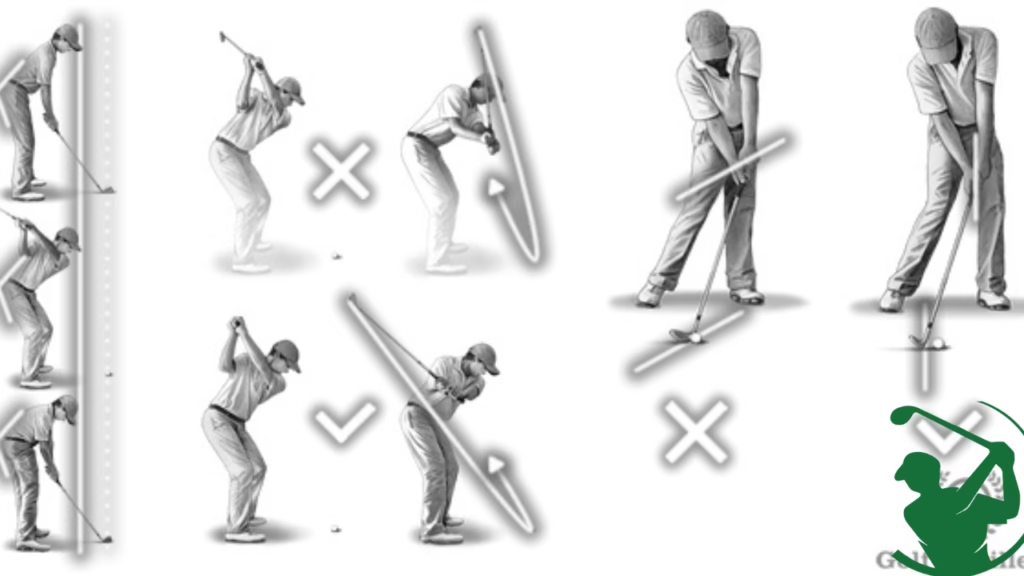Golf Swing Tips for Beginners
Golf has long been a game of precision, patience, and technique. When I started playing the game of golf and picked up a club, I was so confused by the volume of information surrounding the perfect golf swing tips. But after thousands of hours, both on the course and at the range, I’ve slowly started figuring out what works. The golf swing isn’t all belt buckle here; belt buckles there — it’s a flow of body movement, muscle memory, and stream of consciousness. With a few tips and some dedicated practice, my swing became a robust and repeatable motion, driving distance and accuracy in equal measure.
In this post, I will cut through the noise and share the golf swing tips that helped me more than any others. Hopefully, I will save you the many years of trial and error I went through. From a novice who needs to learn the fundamentals of grip, stance, and ball position to an experienced golfer looking for tips on more advanced skills like shot shaping and boosting clubhead speed, you’ll find all the actionable quotes you’ll need here. I will guide you through the basics, dissect common mistakes, and show you drills to work on your mechanics and develop muscle memory.
What I’ve learned over the years is that the swing might seem simple—bringing the club through to hit the Ball—but it’s much more about consistency and feeling how your body moves. While you work through these tips, remember that golf is a game of personal adjustment. What works for one might have to be modified a bit for another. But everyone can improve, given the proper foundation. We will get into it and assemble an effective golf swing that suits you! Let’s begin!
Fundamentals of a Great Golf Swing Tips

The fundamentals of any great golf swing tips and these key components are essentials for any semi-promising goal of hitting straight and getting consistent! Now, let’s break down the elements that make up a successful swing: grip, stance, posture, alignment, and ball position.
Grip
Your grip is the fundamental building block of your whole swing, influencing your ability to control the club. I have tried different styles of grips over the years, but the neutral grip felt more comfortable to me. The most important part is what you think they have in your hands on the club; you do not want them to be too tight or loose. Hand position: When I take the club in my hands, I make sure my left hand (for a right-handed player) is high and my thumb straight down the shaft. That puts the right hand on top of the left, with the pinky resting above, which feels natural and relaxed.
Stance
You are working with your frame, which is your starting position before every swing and is integral to your overall balance and consistency. I discovered that with a wider stance, I’m more stable, particularly with longer clubs. The feet should be about shoulder-width apart , and the knees should be slightly bent. Ensure your weight is evenly distributed between the balls of your feet and your heels. A proper stance helps you align your body and prepare for a swift, controlled swing.
Posture
Good posture is crucial to a strong and balanced swing. I have learned that bending at the hips, not the waist , is the trick. This keeps your back straight while allowing you to maintain balance. Your shoulders should be lowered, you should feel a little tilt, and your arms should be an extension of your body. I have found that this also gives me the correct swing path and keeps me from injuring myself.
Alignment
Alignment is how your body is lined up with your target. In addition, I always concentrate on keeping my feet, hips, and shoulders parallel to the target line. This also helps promote a flatter swing path to promote accuracy. When you practice, alignment sticks or clubs can be used on the ground so you are aware of the alignment of your body as well.
Ball Position
The ball position may vary with the club you’re using, but generally, for most shots, I play the Ball just inside the left heel (for right-handed players, that is). I position the Ball just forward for a driver but pull it back toward the center for short irons. Ball position influences the angle of attack and shot trajectory, so the most important thing is that you are consistent with your ball position.
The Swing Process Explained in Steps

After learning the fundamentals, the next stage is to learn how to combine everything in the swing. The golf swing tips can be divided into five distinct phases: backswing, transition, downswing, impact, and follow-through. Let me break it down for you.
The Backswing
The backswing is where the tension is built and about preparing for the power you will deliver on the downswing. For me, it’s starting the takeaway slow and controlled so I can maintain balance and have a foundation. My hips rotate as I take the club back, and my shoulders follow without splashing or swaying to complete the turn. Good posture during the backswing is critical because this sets the stage for a smooth transition.
The Transition
The transition is one of the swing’s most important yet misunderstood parts. This is the transition of your body from backswing to downswing, where many golfers go astray. I work hard to initiate the downswing with my hips in a controlled manner while tracking my hands and arms. A solid transition helps establish the power and precision of your downswing.
The Downswing
This is where the magic of a downswing occurs. This is where you build your speed and power and transfer it into the Ball. I’m finding that starting the downswing with my lower body (hips and legs) creates speed in the club and maintains control. As I bring the club down, I concentrate on hitting the Ball in the “sweet spot” of the clubface to achieve maximum distance and accuracy.
Impact
Impact is the moment of truth — the moment the clubface strikes the Ball. This is where you see all the preparation you put in beforehand pay off. I see a big difference in distance and control when I concentrate on making good contact and hitting the Ball well. A good impact position shows a shaft that leans slightly forward (on most shots) and helps compress the Ball for crisp contact.
Follow-through
The follow-through is as important as the swing. Make sure to end your swing balanced on your front foot, your body toward your target, and that club extended. A good finish tells me I’ve made a sound, efficient swing and stayed balanced. The follow-through also helps keep me accurate and injury-free.
All the Swing Mistakes and How to Fix Them

Experienced golfers might throw a few shots, but it helps them understand the mistakes and rectify them. So here are some common swing mistakes I’ve noticed and some practical advice for correcting them.
Slicing
One of the most maddening mistakes you can make is a slice; I’ve certainly had mine. A slice is when the Ball curls sharply to the right (for right-handed golfers) because of an open clubface at impact. To address this, I ensure I’m not getting too weak in my grip and my wrists don’t break down in the swing. I also provide my swing path is inside out, not over the top.
Hooking
Conversely, a hook occurs when the Ball turns sharply left. I used to fight against this, but the solution was usually simply a grip adjustment. A stronger grip—with both hands turned a little to the right—helps close the clubface and eliminate the hook. Also, an emphasis on a more neutral path can ease the hook.
Poor Tempo
Tempo is the rhythm and timing of your swing. This can lead to jerky, hurried swings that produce inconsistent shot results. I’ve discovered that it’s all about developing a smooth rhythm. Tempo can be improved by practicing swinging at a slower speed, then gradually adding speed to establish a faster tempo swing. It helps me develop muscle memory, which keeps my swing consistent.
Lack of Consistency
Such consistency is one of the most elusive goals in golf, but it is imperative to lower your scores. My usual reaction would have been frustration at poor and inconsistent shots, but what helped the most was the simple act of focusing on the basics of grip, stance, and aligned posture before even hitting the shot. Regular practice with good form has also developed the muscle memory I need to achieve more consistent results.
Best swing method: advanced-level Parallels

Once you have the fundamentals down, it’s time to practice some of these advanced techniques , which will help you hit the Ball farther, master the depth of your shots, and control your shape.
Increasing Clubhead Speed
One of the determining factors in how far you hit the Ball is clubhead speed. Through the years, I’ve discovered that proper body rotation and timing are the fastest way to get a lot of clubhead speed. I’m thinking about building a fluid, smooth motion from the ground up through my legs, hips, and torso to generate speed. Strength training and flexibility exercises, too, have allowed me to build the strength necessary for a faster swing.
Ball Control
Ball control is key to crafting your shots; it’s your aim to penetrate the target. My wrist position is critical, and I’ll maintain a stable grip through the impact to control distance and direction. I would make sure that you practice with different clubs and different paths to the Ball in order to see how the Ball reacts to the alterations you make with your swing.
Shot Shaping
If you are wondering about Ball shaping, it is an advanced technique that allows you to curve the Ball intentionally. Whether working on a draw or fade, it calls for precision with your grip, alignment, and swing path. On the driving range, I frequently test my ability to shape shots, hitting intentional draws and fades and adjusting my clubface angle and swing path.
The Mental & Physical Nature of the Golf Swing Tips
A good golf swing isn’t all about technique; it’s also about the right mindset and physical fitness. We are going to see how the mental and physical aspects can help you be even better.
Building Confidence
Confidence is tremendous in how I play my shots. When I’m confident with my swing, I make better decisions and deliver finer shots. I try to build confidence by remembering the times when I hit good shots previously and imagining the ending of the shot the way I want it to be. Regular practice and tracking my progress also help me stay positive.
Focus
Golf is just as much about the mind as the body. I’ve learned that simply staying present on each shot is the key to consistency. To maintain concentration, I breathe and mute outside noise. My pre-shot routine—visualizing my shot and thinking through my target—helps me stay focused.
Flexibility
Flexibility is crucial for achieving a full, controlled swing. I have worked hard on flexibility and have focused more on stretching in my workouts. A more elastic body can rotate, swing longer, and consistently hit the Ball.
Strength Training
Strength is key to creating power in your swing. In the years since, I’ve added strength training to my fitness routine to improve my golf game. Specific exercises, including core strengthening, legs, and shoulders, help me produce more incredible speed and power in my swing.
Improvements in Training Aids and Coaching

Few things can improve your golf swing more than practicing, but the right drills can be a game changer. Here are some of my favorite drills for fine-tuning your swing mechanics.
The Half-Swing Drill
Working on balance and control is best done with the half-swing drill. It’s a drill I can use to think about the takeaway and finish, ensuring my posture and alignment are sound. I can focus on making a solid, crisp contact when I take a half-swing.
The Impact Drill
Practicing impact position: The impact drill confirms better that I’m striking solidly and getting the correct angle at impact.
The Swing Path Drill
An improper swing path is a prevalent problem in golf. Remedying this one is straightforward; I add alignment sticks to help visualize my swing path. This drill allows me to concentrate on working the club from the inside out, which is the best cure for my tendency to slice.
Frequently Asked Questions About the Golf Swing Tips
How do I fix my swing to become a more consistent golfer?
Focusing on the fundamentals, repetition breeds consistency. Practicing regularly with proper alignment and a smooth, controlled tempo will also help you improve consistency.
How do I fix my golf slice?
To cure a slice, examine your grip and make sure it isn’t weak. Focus on hitting from the inside out and maintaining a square clubface at impact.
How can I increase my swing speed with exercises?
Strengthening, flexibility, and rotational drills will produce more speed and power with the clubhead.
Conclusion
All that said, getting better at your golf swing is a process that takes time, effort, and an open mind. Whether you’re perfecting the basics, correcting frequent errors, or polishing advanced moves, consistency and body awareness are the secret weapons to success. You will see the game get noticeably better through correct grip, stance, posture, alignment, and then the swing process.
There’s no uniform answer, and you have to adjust your swing based on where you’re starting and what you’re ultimately trying to achieve relative to your body type and skill level. With the right mindset and the suggestions in this post, I have no doubt you can reach a new level of your best self and have more consistent and better rounds out on the course. Train hard, be patient, and most importantly, enjoy!






